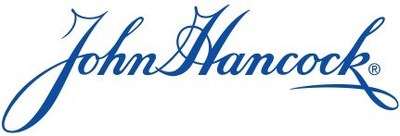John Hancock Retirement Participants Maintain Steadfast Approach to Savings Despite Pandemic
John Hancock Retirement reports strong resilience among retirement savers amid the COVID-19 pandemic. As of July 2020, over 1 million participants maintained their savings allocations, with only a small fraction opting for coronavirus-related distributions. The company emphasizes the effectiveness of retirement plan design, highlighting that 63% of participants utilizing automatic enrollment and increases are retirement-ready. The data reveals that younger participants, especially those aged 30-39, exhibit higher retirement readiness rates, reinforcing the importance of proactive plan features.
- Over 1 million participants maintained their retirement savings allocations during the pandemic.
- Only a small fraction (less than 1%) opted for coronavirus-related distributions.
- 63% of participants using automatic enrollment and increases are classified as retirement-ready.
- Younger participants (ages 30-39) show a retirement readiness rate of 66%.
- None.
Insights
Analyzing...
TSX/NYSE/PSE: MFC SEHK: 945
BOSTON, Sept. 9, 2020 /PRNewswire/ - John Hancock Retirement continues to observe resiliency in retirement savers despite the COVID -19 pandemic. Through the economic uncertainty and market volatility, the majority of the more than 1 million participants in over 1,900 John Hancock open architecture plans have maintained allocations to their retirement savings. John Hancock Retirement's participant data shows that an equal percentage of participants lowered their contribution rate in July 2020 as in July 2019, and while overall distribution activity was higher than July of last year, less than one percent of participants are taking the coronavirus-related distributions (CRDs) permitted by the Coronavirus Aid, Relief, and Economic Security (CARES) Act. Additionally, less than one percent made any changes to their investments, similar to July 2019.
Since the beginning of the COVID-19 pandemic in the U.S., John Hancock Retirement has supported participants, advisors, and sponsors alike with a robust market volatility engagement program and in-depth articles on participant behavior.
"The data we have observed since March is very encouraging and is in keeping with what we know about retirement readiness and the effectiveness of retirement plan design, including the behavior of participants, the outcomes they're experiencing, and how they impact the journey toward a secure retirement, said Lynda Abend, Chief Data Officer, John Hancock Retirement.
Prior to the COVID-19 pandemic, John Hancock Retirement observed participant behavior and data consistent with effective plan design, participant education and engagement in its State of the Participant 2020 Study. The study showed that a retirement-ready majority is within reach, with the majority of 401(k) participants (under age 50) already considered secure for retirement. The data also uncovered the impressive outcomes of automatic enrollment and increase features, as well as the risks investors take when improperly allocating to equities for their specific profiles.
"We cannot underestimate the power of the successful innovations in plan design that continue to promote retirement readiness," said Scott Francolini, Head of Strategic Relationship Management & Consulting, John Hancock Retirement. "Through economic uncertainty and regardless of the economic cycle, every plan decision has an impact on the potential success of its participants."
Additional findings from the State of the Participant 2020 Study included:
- Participants under age 50 are more likely to be retirement-ready: Younger 401(k) participants are on track for retirement-readiness, with rates declining after age 49. Participants aged between 30 and 39 were the most retirement-ready at 66 percent, followed by those younger than 30 at 60 percent, and participants aged 40 through 49 at 53 percent. John Hancock defines retirement-readiness as the expected ability for a participant's projected assets at normal Social Security age to replace at least 70 percent of their preretirement earnings.
- Automatic enrollment and increases continue to drive retirement-readiness: Auto features—automatic enrollment and automatic increases (which escalate employee contribution rates each year)—can make a profound difference in supporting retirement-readiness. The positive effects of these features get a boost when they're used together. For example, 63 percent of participants, whose plans included automatic enrollment, with a default contribution rate of 6 percent, and auto increase, were retirement-ready, while less than half (48 percent) of participants without these auto features were retirement-ready.
- Participants are Investing too Conservatively or Aggressively Based on Age: The 2020 study found that the current asset mix of participants who choose their own investments may be under or over-allocated to equities. The data shows that all populations could use additional guidance to maintain recommended allocations whether it's through education, direct advice, or an introduction to managed accounts or target-date fund investing.
"We are all too aware of the impact that the COVID-19 pandemic has had on our families, friendships, communities, and how we live and work," continued Ms. Abend. "Because of the concerns about the future, and other unknowns highlighted by the pandemic, optimizing retirement security has perhaps never been more important. Understanding how participants are responding during this time will help us see where participants, sponsors and advisors need the most support and where we can react with customized tools, education and communication to close those gaps in retirement-readiness."
For more information on July participant data, please click here. For the State of the Participant 2020 report, including tips for overall retirement readiness, please click here.
Methodology
All participant data mentioned above is John Hancock's internal data as of July 31, 2020, for the open-architecture platform only. As of March 31, 2020, the open-architecture platform included approximately 1.3 million participants and 1,963 plans.
The 2020 State of the Participant data was pulled from John Hancock's open-architecture platform, which included 1.2 million participants, 1,123 plans, and
About John Hancock Retirement
John Hancock Retirement is the U.S. retirement business of Manulife Investment Management. For nearly 50 years, we've helped people plan and invest for retirement; today, we're one of the largest full-service providers in the United States.¹ We take a hands-on consultative approach based on the idea that no two plans - and no two plan participants - are exactly alike. We partner with plan sponsors, financial professionals, and third-party administrators to ensure that every plan is personal to the participant and helps deliver results.
As of June 30, 2020, John Hancock serviced over 51,000 retirement plans with over 3 million participants and over
1 "2020 Defined Contribution Recordkeeper Survey," PLANSPONSOR, 2020. |
2. As of June 30, 2020, John Hancock Life Insurance Company (USA) supported 46,942 plans, 1,590,762 participants, and |
About Manulife Investment Management
Manulife Investment Management is the global wealth and asset management segment of Manulife Financial Corporation. We draw on more than a century of financial stewardship and the full resources of our parent company to serve individuals, institutions, and retirement plan members worldwide. Headquartered in Toronto, our leading capabilities in public and private markets are strengthened by an investment footprint that spans 17 countries and territories. We complement these capabilities by providing access to a network of unaffiliated asset managers from around the world. We're committed to investing responsibly across our businesses. We develop innovative global frameworks for sustainable investing, collaboratively engage with companies in our securities portfolios, and maintain a high standard of stewardship where we own and operate assets, and we believe in supporting financial well-being through our workplace retirement plans. Today, plan sponsors around the world rely on our retirement plan administration and investment expertise to help their employees plan for, save for, and live a better retirement.
As of June 30, 2020, Manulife Investment Management had CAD
John Hancock Retirement Plan Services, LLC• 200 Berkeley Street • Boston, MA 02116
NOT FDIC INSURED. MAY LOSE VALUE. NOT BANK GUARANTEED.
© 2020 John Hancock. All rights reserved.
![]() View original content to download multimedia:http://www.prnewswire.com/news-releases/john-hancock-retirement-participants-maintain-steadfast-approach-to-savings-despite-pandemic-301126035.html
View original content to download multimedia:http://www.prnewswire.com/news-releases/john-hancock-retirement-participants-maintain-steadfast-approach-to-savings-despite-pandemic-301126035.html
SOURCE John Hancock Retirement








